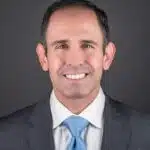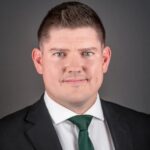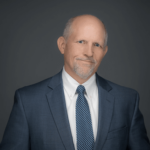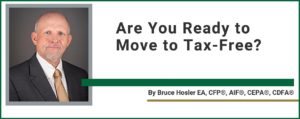Beneficiary Designations – Estate & Legacy Planning
.
In the second installment of our estate and legacy planning series, we highlight the critical role of beneficiary designations in securing and managing wealth. Estate planning goes beyond wills and trusts; proper beneficiary designations on accounts like IRAs, 401(k)s, annuities, and life insurance determine where assets go upon death, often bypassing wills and trusts altogether.
I emphasize the nuances of Individual Retirement Accounts (IRAs), particularly their “individual” nature and the implications of beneficiary designations. Primary beneficiaries, usually spouses, receive unique advantages, such as the ability to roll over an IRA into their name and defer Required Minimum Distributions (RMDs) based on their age. Contingent beneficiaries, often children or grandchildren, are next in line, while tertiary beneficiaries—commonly overlooked—provide an additional layer of security to ensure assets avoid probate in unexpected situations.
We also discuss the potential pitfalls of outdated designations, such as an ex-spouse unintentionally remaining a beneficiary. Jason, Alex, and I stress the importance of regularly reviewing and updating these designations to reflect life changes, like marriages, divorces, or the addition of new family members. Naming individual beneficiaries is generally preferable to designating trusts, as it simplifies the transfer process and helps avoid complications that could lead to unintended tax consequences.
A key focus is the tax implications of inherited IRAs. Under the Secure Act 2.0, non-spousal beneficiaries must withdraw all funds from an inherited IRA within ten years, which may occur during their highest earning years, resulting in significant tax burdens. Converting traditional IRAs to Roth IRAs during the owner’s lifetime can help mitigate this, ensuring heirs receive funds tax-free. However, beneficiaries cannot convert inherited IRAs, highlighting the importance of proactive planning.
We conclude with advice on leaving IRAs to charities as part of tertiary beneficiary planning. This strategy allows families to avoid taxes on inherited IRA funds while supporting philanthropic goals.
Regularly reviewing beneficiary designations is essential, as it allows adjustments without the need to amend trusts or incur additional costs. With thoughtful planning, beneficiary designations can ensure wealth is preserved and transferred efficiently, aligning with the owner’s wishes and minimizing potential tax burdens.
Disclosure: Ed Slott’s Elite IRA Advisor Group is a private IRA study group of professional financial advisors.
For more information about anything related to your finances, contact Bruce Hosler and the team at Hosler Wealth Management: Visit them online at https://www.hoslerwm.com/
Call the Prescott office at (928) 778-7666 or our Scottsdale office at (480) 994-7342.
For more podcast episodes, visit our podcast website at https://hoslerwm.com/protectingwealthpodcast/
Limitation of Liability Disclosures: https://www.hoslerwm.com/disclosures/#socialmedia
Copyright © 2022-2025 Hosler Wealth Management LLC, All Rights Reserved. #ProtectingWealthPodcast #ProtectingandPreservingWealthPodcast #HoslerWealthManagement #BruceHosler
Guest Profile

Alex Koury CFP®, CERTIFIED FINANCIAL PLANNER® professional and Wealth Manager in Scottsdale, has worked in the financial services industry for fifteen years as a financial advisor and Financial Planner. He holds Series 7, 9, 10 & 66 securities registrations– and is a Registered Representative with Commonwealth Financial Network®.
Guest Profile

Jason Hosler holds Series 7 and 66 FINRA securities registrations. He brings a technological edge to our firm and helps many of our clients stay current in the fast-moving age of the internet.
Podcast Host

Bruce Hosler is the founder and principal of Hosler Wealth Management, LLC., which has offices in Prescott and Scottsdale, Arizona. As an Enrolled Agent, CERTIFIED FINANCIAL PLANNER® professional, and Certified Private Wealth Advisor (CPWA®), Bruce brings a multifaceted approach to advanced financial and tax planning. He is recognized as a prominent financial professional with over 28 years of experience and a seven-time consecutive *Forbes Best-In-State Wealth Advisor in Arizona. Bruce recently authored the book MOVING TO TAX-FREE™ Strategies For Creating Tax-Free Retirement Income And Tax-Free Lifetime Legacy Income For Your Children. www.movingtotaxfree.com.
In the Protecting & Preserving Wealth podcast, Bruce and his guests discuss current financial topics and provide timely answers for our listeners.
If you have a topic of interest, please let us know by emailing info@hoslerwm.com. We welcome your suggestions.
*2018-2024 Forbes Best In State Wealth Advisors, created by SHOOK Research. Presented in April 2024 based on data gathered from June 2022 to June 2023. 23,876 were considered, 8,507 advisors were recognized. Not indicative of advisor’s future performance. Your experience may vary. For more information, please visit.
Transcript
Protecting and Preserving Wealth – Estate and Legacy Planning – Part 2 of 6
Speakers: Jon Gay, Bruce Hosler, Jason Hosler & Alex Koury.
[Music Playing]
Jon Gay (00:07):
Welcome back to Protecting and Preserving Wealth and part two of our series on estate and legacy planning. I’m Jon Jag Gay, joined by Alex Koury, Jason Hosler, and Bruce Hosler of Hosler Wealth Management. Welcome everyone.
Bruce Hosler (00:17):
Thank you, Jon.
Jason Hosler (00:18):
Hi Jon.
Alex Koury (00:19):
Good morning, Jon.
Jon Gay (00:20):
Alright, so in the first part of our series, which I would encourage you to go back and listen to or watch if you haven’t done so yet, we talked about estate planning documents and how to title your assets. Today we’re going to talk about beneficiary designations, which is crucially important to any kind of estate planning. Bruce, where do you want to start?
Bruce Hosler (00:36):
I want to start with IRAs because I get this question a lot, majority of the time, maybe from a wife. And she says, “Hey, he has his IRA, why can’t we put that into a joint name?” And the reason is because it’s an individual retirement account.
Jon Gay (00:55):
That’s the “I.”
Bruce Hosler (00:57):
That is the “I.” And if we do that, then it becomes a taxable event. So, individual retirement accounts have to remain that way.
Now, I have been an Ed Slott master Elite IRA advisor now for almost 15 years. And the concepts today that I want to talk about are one of the things where I think cost of wealth management really, really advances over a lot of other advisors in the marketplace because we have the ability and have been trained on how to use a primary beneficiary designation, a contingent beneficiary designation, and a tertiary IRA beneficiary designation.
Now, it’s not just for IRAs, it could be for 401(k)s, for annuities, for life insurance, for Roth IRAs, pension plans, retirement accounts and accounts that we have titled as POD or TOD, Pay on Death at a bank, or TOD which is Transfer on Death at a brokerage account.
All of these types of accounts control the money and leave the money when you die through a beneficiary form. Your trust, your will, does not control where the money goes when you die for these types of accounts. And a lot of clients don’t realize that.
Jason Hosler (02:25):
That can be problematic too. One of the things that we’ve seen is you have a divorce that occurs and then someone gets remarried, but they never remember to go back to the 401(k) and update the beneficiary. They die; that beneficiary hasn’t been updated. The institution is going to follow what the form says to do.
Jon Gay (02:49):
And it’s the ex’s lucky day.
Bruce Hosler (02:51):
Yes, sometimes. Now sometimes in Arizona, we have some laws that help transfer that to a current spouse and away from a divorced spouse. But if it’s an ERISA plan like a 401(k) or a 403(b) or one of those type of retirement plans, it’s probably going to follow the beneficiary form.
Can you imagine in those situations where spouses have been divorced for decades, 20, 30 years, and then the money is going to go to that ex-spouse? That is a result that we don’t want to have happen.
Jason Hosler (03:28):
This is why we spend time to make sure with any new clients who come on board that we are reviewing the beneficiary designations of all of those types of accounts. The IRAs, the 401(k)s, the life insurance, the annuities. You want to make sure that you’re very thorough because if you miss something, you could end up in a situation like that.
Bruce Hosler (03:47):
Now, I want to talk about what I’m going to call cascading beneficiary designations. So, we start up here with the primary beneficiary. Alex, who do we always want to be the primary beneficiary on all of these types of accounts?
Alex Koury (04:02):
So, the primary beneficiary should be your spouse or partner, number one. Because as those assets transfer to your spouse or partner, they’ll be able to use those assets during their lifetime first and foremost.
Bruce Hosler (04:14):
Well, and they have special benefits. So, your wife or your spouse or your husband, they can take your IRA and roll it over into their own IRA and the RMDs are based on their age. And nobody else can really do that. That is a special benefit for spouses.
So, we always want that spouse named as 100% primary beneficiary. We don’t want 50% to our spouse and 50% to the kids. We want to name the spouse 100% primary beneficiary. Now, Alex, who do we name normally as the contingent beneficiary then?
Alex Koury (04:51):
So, normally it’s going to be children and grandchildren. That’s who you want to be as your second because if something were to happen to you and your spouse, you’re on a trip, an accident happens, you both pass away unexpectedly. Well, you want the money to go somewhere, that’s going to be to your contingent or your second beneficiary as you’ve listed on your accounts.
Bruce Hosler (05:09):
Jason, there are some specific reasons why I want an individual named as the beneficiary of an IRA, not a trust or that. What is that reason why we want to name those children individually as the beneficiary of that IRA account?
Jason Hosler (05:26):
Well, number one, it’s cleaner. Unless you have a trust that is actually set up to be the beneficiary of those retirement type accounts and has the language to make that happen, going into a trust can be problematic. There are rules around IRAs and 401(k)s for non-natural beneficiaries that can cause issues for the kids.
So, oftentimes we’ll see in a trust where they’ll name funeral expenses. Now you have a non-natural beneficiary, and you can make the entire amount taxable potentially. You could delay the ability to take advantage of the 10-year period to leave that amount either tax deferred or tax free, if it’s a Roth IRA. It makes things cleaner to have that contingent be a natural person, generally the kids or the grandkids named for the percentage that you’re leaving to each one of them.
Bruce Hosler (06:28):
So, folks, you just heard some real important information from Jason there. So, we have our primary, we have our contingent beneficiary.
Now, what I want to tell you is that almost every company, every investment will name on the beneficiary form a place for a primary and a contingent. You know what they don’t have, folks? They don’t have a place for a tertiary beneficiary. Well, many institutions will allow you to name a tertiary beneficiary, and you may say, “Well Bruce, why do I need a tertiary beneficiary?”
Well, let’s think about it. You’re retired, you’re going on the Disney cruise with some of your kids and your grandkids and the boat goes down. You’ve got your spouse as the primary; you’ve got all your children as the contingent. But who do we put as the tertiary? That’s when we may name the revocable living trust or an IRA beneficiary trust that has language to receive that IRA as the tertiary beneficiary.
Now what happens, the other grandchildren that weren’t there or the cousins or whoever the other beneficiaries are, they all avoid probate because we used a tertiary beneficiary designation. We avoided the cost; we avoided the delay. We can just use the IRA beneficiary and flow that money through to the family members through that revocable living trust.
Jon Gay (07:57):
It’s one of those situations where you hope you never have to get down to that tertiary beneficiary, but you don’t want to be in a situation where you need it, you don’t have it.
Bruce Hosler (08:07):
Exactly. And since we’re drawing up documents, why wouldn’t you cross your T’s and dot your I’s.
Now, the other thing I want to talk about on these beneficiary designations is when you are leaving money to your family, do you want to leave it tax deferred, so they have to pay taxes or do you want to leave it tax free?
Jon Gay (08:32):
I feel like that’s a rhetorical question, Bruce.
Bruce Hosler (08:35):
Well, it is rhetorical. Sometimes though, the parents, it may not be rhetorical because they’re like, “You know what Bruce? I don’t care if they have to pay the taxes. I’m leaving in the money; they have the money to pay the taxes.” And we actually have some clients that come in and say that, right Alex?
Alex Koury (08:55):
That’s right. Some are saying, well it’s not going to be my problem then, my kids will worry about it. And that may not be the best solution either for many, many reasons.
One of them being primarily, again the theory of taxes and over taxation. If you’re older, your children are going to be in their highest earning years. They inherit an IRA from you, they have to pay taxes on that on top of their income, that could be a 40% hit on the distributions they’re going to be taking that supposedly were going to be used for their benefits of some sort.
And we talked about a little bit in the last episode there about future inflation, future taxes. Ideally, if you’re a steward of your money for your family, for future family wealth, you want to protect as much as that as you can while you’re alive and for the future while your kids can use it for their benefit or their grandchildren can, to be able to get ahead in life or stay ahead.
Bruce Hosler (09:50):
There’s a very important nuance here that I want to talk to our clients about. And that nuance is this: while you’re alive, you can convert your traditional IRA to a Roth IRA. When you pass away and die, the IRA that you leave to your children now has to be taken out of your IRA and invested in what I’m going to call as an inherited IRA or a beneficial IRA.
And that inherited IRA or that beneficial IRA will now pay out the income to your children and with the new secure Act 2.0, they have to take those distributions over 10 years on a taxable IRA and take it all out. And they have to take a distribution each year over those 10 years.
On a Roth IRA, they don’t have to take any distributions until the end of the 10th year. But here’s a point, if you have not converted that IRA to a Roth IRA, your children cannot; they lose the ability. The inherited IRA, the beneficial IRA, cannot be converted to a Roth IRA.
So, your children are going to be forced to pull that money out, perhaps as Alex has said, at their highest tax rate. And so, these beneficiary designations and the way you leave your IRAs are very important and the consequences can be severe for your children.
Jon Gay (11:20):
We talked about the Secure Act 2.0 in a previous episode and how the rules around those inherited IRAs have changed. So, I would encourage you to go back and listen to that episode if you need more familiarity with that.
Bruce Hosler (11:30):
One last topic that I want to make sure we talk about. Jason, when we have clients come in on their annual reviews, we want to review the beneficiary forms for their IRA accounts, retirement accounts, things like that. Why is that so important to kind of look at every year?
Jason Hosler (11:46):
Well, number one is to make sure if there’s been any changes in a client’s situation, that how we have those beneficiary designations still are aligned with what they intend to have happen.
Number two is to catch anything that might be off where a client thought it was one way, and actually this is how it really is. So, it’s confirming that we have things set up as the client intends them to go.
Bruce Hosler (12:13):
One of the benefits, folks, of beneficiary forms is, guess what? It doesn’t cost you any money to change your mind. If you have a falling out with a child, or a new grandchild’s born and you want to leave money to them, you can come in, we can fill out a new form for you, you can sign it.
You didn’t have to spend any attorney’s time, you didn’t have to amend your trust. You get to just change a beneficiary form and sign it and redirect the percentages, the amounts of where you’re leaving your money. So, these beneficiary forms are very convenient. It’s a great way for you to do it.
Now, what is the most important money that you should be leaving to a charity? And my answer for you is your IRA money.
So, the other tertiary beneficiary- it can be spouse primary, children contingent, and you can leave a charity as the tertiary, your wife and your kids didn’t pay taxes on it. They can disclaim, you can leave it to the charity. And now your family didn’t pay any taxes on that IRA and the charity receives it and they didn’t pay any taxes either.
So, there’s some really cool beneficiary planning that we can do with you. If this intrigues you and you’d like to talk to us, we would like to talk to you about your beneficiary designations.
Jon Gay (13:28):
And with that in mind, Bruce, if somebody wants to talk to you and your incredible team, three of which are here with us today at Hosler Wealth Management, how do they best find you?
Bruce Hosler (13:35):
Hey Alex, tell us how they can get us here in Scottsdale.
Alex Koury (13:38):
So, in Scottsdale, give us a call at (480) 994-7342.
Bruce Hosler (13:46):
And up in Prescott, Jason.
Jason Hosler (13:48):
Up in Prescott, you can reach us at (928) 778-7666.
Bruce Hosler (13:54):
And of course, everyone, if you need to get us on the website, https://hoslerwm.com, we would love to hear from you.
Jon Gay (14:00):
Alright, this has been the second in our six-part series on estate and legacy planning and in a couple weeks we’re going to talk about titling your assets correctly in part three. We’ll talk to you guys then.
[Music Playing]
Voiceover (14:10):
Securities and advisory services offered through Commonwealth Financial Network member FINRA/SIPC, a Registered Investment Adviser. Forward-looking commentary should not be misconstrued as investment or financial advice. The advisor associated with this podcast is not monitored for comments and any comments should be given directly to the office at the contact information specified.
Any tax advice contained in this communication, including any attachments, is not intended or written to be used and cannot be used for the purpose of 1) avoiding federal or state tax penalties or 2) promoting marketing or recommended to another party, any transaction or matter addressed herein address.
The accuracy, completeness, and timeliness of the information contained in this podcast cannot be guaranteed. Commonwealth Financial Network does not provide legal or tax advice. You should consult a legal or tax professional regarding your individual situation.
Accordingly, Hosler Wealth Management LLC does not warranty, guarantee or make any representations or assume any liability with regard to financial results based on the use of the information in this podcast.
Comments are closed.


